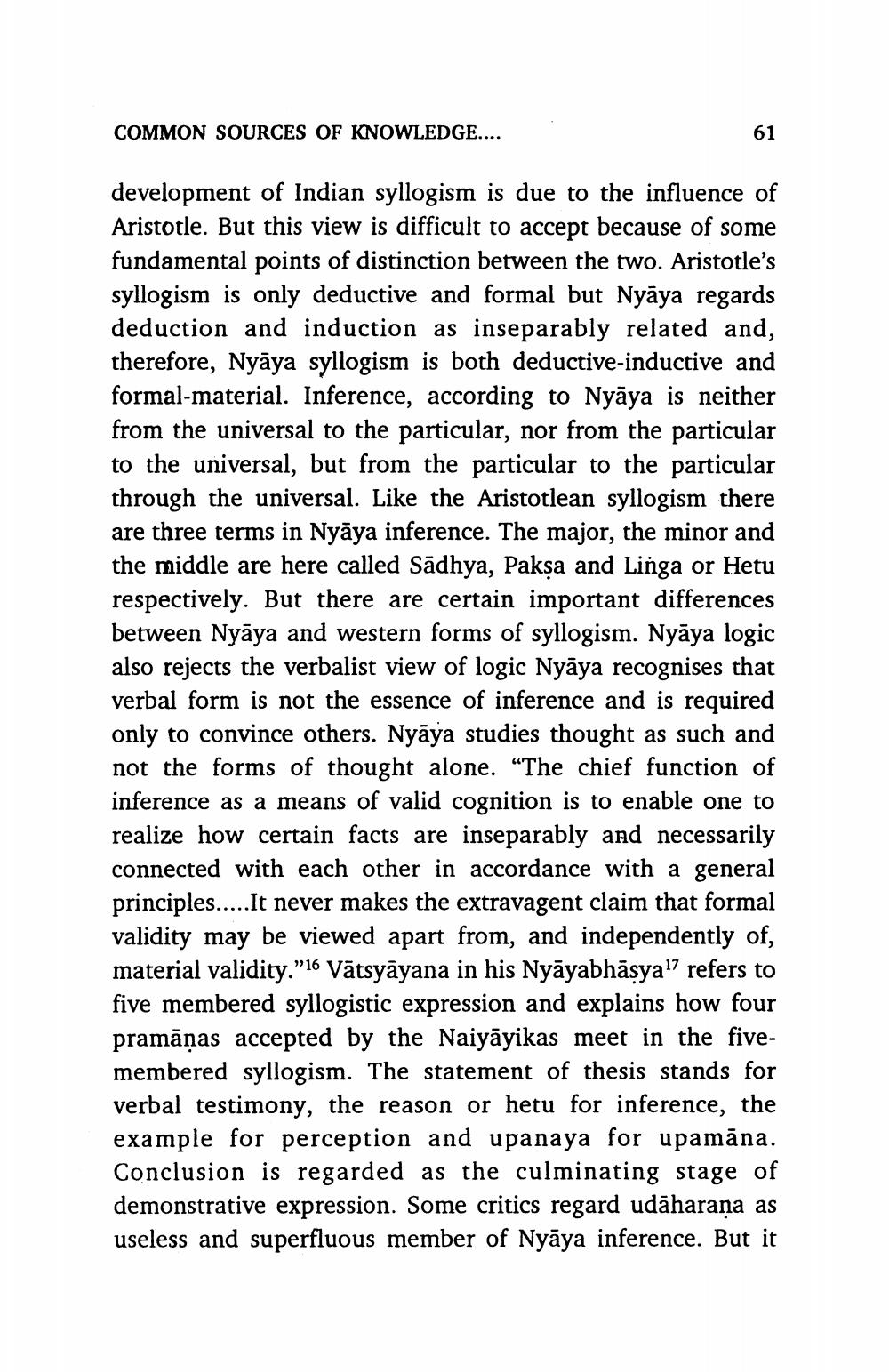________________
COMMON SOURCES OF KNOWLEDGE....
development of Indian syllogism is due to the influence of Aristotle. But this view is difficult to accept because of some fundamental points of distinction between the two. Aristotle's syllogism is only deductive and formal but Nyāya regards deduction and induction as inseparably related and, therefore, Nyāya syllogism is both deductive-inductive and formal-material. Inference, according to Nyāya is neither from the universal to the particular, nor from the particular to the universal, but from the particular to the particular through the universal. Like the Aristotlean syllogism there are three terms in Nyāya inference. The major, the minor and the middle are here called Sādhya, Paksa and Linga or Hetu respectively. But there are certain important differences between Nyāya and western forms of syllogism. Nyāya logic also rejects the verbalist view of logic Nyāya recognises that verbal form is not the essence of inference and is required only to convince others. Nyāya studies thought as such and not the forms of thought alone. “The chief function of inference as a means of valid cognition is to enable one to realize how certain facts are inseparably and necessarily connected with each other in accordance with a general principles.....It never makes the extravagent claim that formal validity may be viewed apart from, and independently of, material validity.”16 Vātsyāyana in his Nyāyabhāsyarefers to five membered syllogistic expression and explains how four pramāṇas accepted by the Naiyāyikas meet in the fivemembered syllogism. The statement of thesis stands for verbal testimony, the reason or hetu for inference, the example for perception and upanaya for upamāna. Conclusion is regarded as the culminating stage of demonstrative expression. Some critics regard udāharana as useless and superfluous member of Nyāya inference. But it




